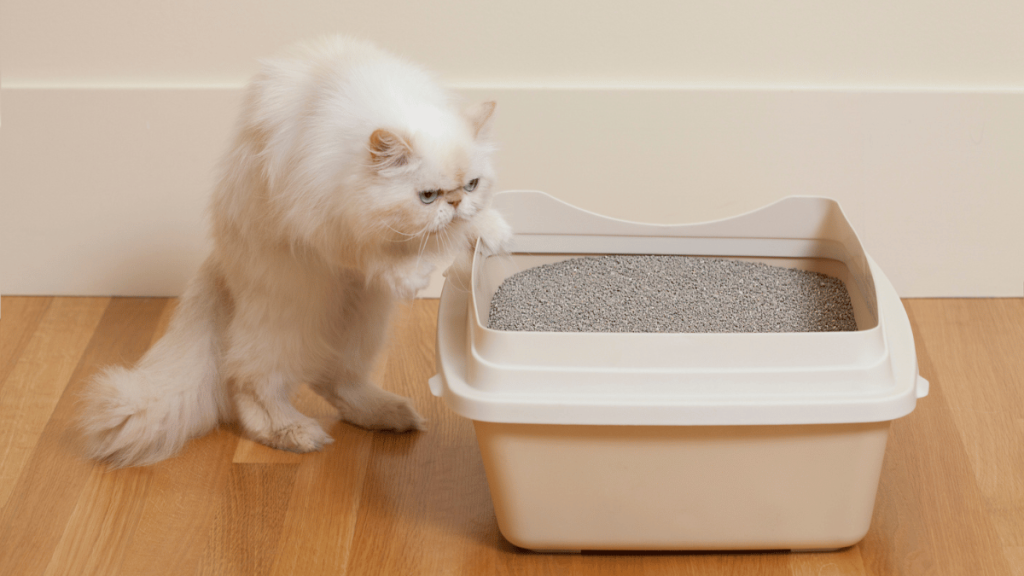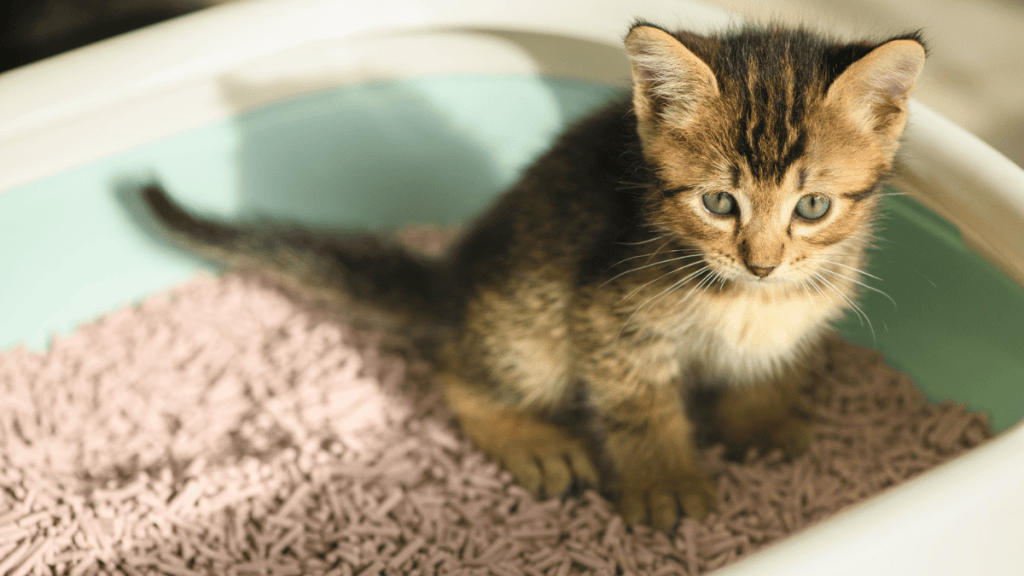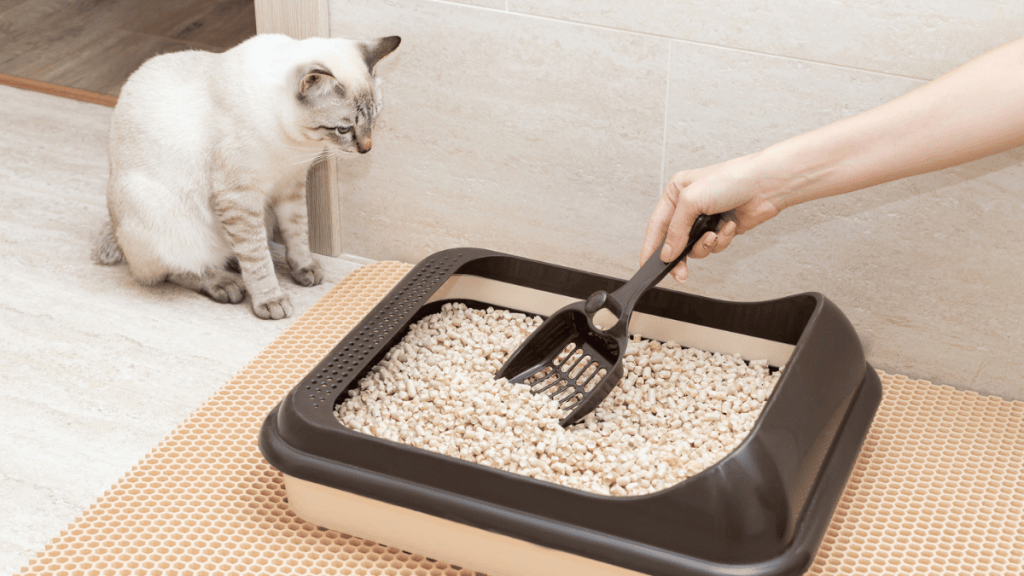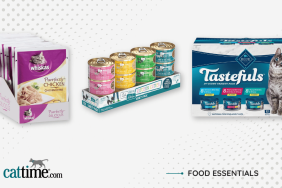Choosing the right cat litter may seem like a no-brainer, but it’s important that you understand that it can directly impact your cat’s comfort, health, and your home’s cleanliness. There are so many types of cat litter available, from the traditional clay to eco-friendly alternatives, and more — figuring out which one is the best fit for your feline and your home can be tricky. The best litter for you will be one that’s safe and comfortable for your cat while also being easy to maintain.
In this article, we’ll go over the different types of cat litter that are available, getting an understanding of their individual pros and cons so that you can make an informed decision. Whether you’re looking for one that’s easy to scoop, a gentle option for sensitive paws, or the best cat litter for odor control, there’s something that will cater to your needs. Plus, you’ll also learn some expert tips on how to keep your cat litter box fresh and hygienic!
All Types of Cat Litter

Below, we’ve listed the different types of cat litter available, along with their benefits and drawbacks:
Clumping Clay Litter
This is one of the most common types of cat litter that you will find. Crafted from bentonite clay, it forms solid clumps as soon as it comes into contact with any moisture. It’s also very easy to scoop and is the preferred type of litter for those using an automatic cat litter box.
- Pros
- Great odor control
- Easy to scoop
- Very easily available
- Cons
- Not biodegradable
- Can be dusty
- May track outside the litter box
Non-clumping Clay Cat Litter
Made using silica gel, crystal cat litter is highly absorbent in nature and deals with odors exceptionally well. It’s very lightweight, produces little dust, and can also be used in automatic cat litter box systems because of how long-lasting it is.
- Pros
- Takes care of nasty odors
- Low dust option
- Will last for long
- Cons
- High price point
- Some cats may not like the texture
- Doesn’t clump very well
Crystal Cat Litter (Silica Gel)
Made using silica gel, crystal cat litter is highly absorbent in nature and deals with odors exceptionally well. It’s very lightweight, produces little dust, and can also be used in automatic cat litter box systems because of how long-lasting it is.
- Pros
- Takes care of nasty odors
- Low dust option
- Will last for long
- Cons
- High price point
- Some cats may not like the texture
- Doesn’t clump very well
Pine Cat Litter
This type of cat litter is made from compressed pine pellets or sawdust and is an eco-friendly cat litter option that naturally neutralizes odors. Ideal for multi-cat households, it absorbs urine efficiently but doesn’t clump, making it perfect for sifting litter boxes.
- Pros
- Low dust
- Natural scent
- Biodegradable
- Cons
- Some cats may not like how it smells
- Doesn’t clump
Paper-based Cat Litter
If you’re looking for dust-free cat litter that’s also eco-friendly, then recycled paper pellets are just what you need! They are safe for both sensitive cats and small kittens — paper-based cat litter is soft on the paws and doesn’t track easily, making it one of the best cat litter for tracking prevention.
- Pros
- Biodegradable
- Highly absorbent
- Dust-free
- Cons
- Requires frequent changing
- Not very effective at odor control
Walnut Shell Cat Litter
Made from crushed walnut shells, this is a natural litter that’s super absorbent, and offers a great deal of odor control. It is also lightweight and produces minimal dust, making it a suitable alternative to traditional clay-based litter.
- Pros
- Low dust
- Good odor control
- Biodegradable
- Cons
- Its dark color makes it hard to see your cat’s waste
- May track
Corn Cat Litter
Cat litter that’s made from corn is biodegradable, clumps well, and controls odors naturally. Cat owners who are looking for the best cat litter for multiple cats can go for this type because of its high absorbency and effective clumping.
- Pros
- Lightweight
- Eco-friendly
- Clumps well
- Cons
- May develop mold if not stored properly
- Some brands may track a lot
Grass Cat Litter
Made from grass fibers, this is a natural and dust-free alternative that also clumps well. It is soft on felines’ paws and is suitable for cats’ sensitivities.
- Pros
- Low dust
- Biodegradable
- Lightweight
- Cons
- May be expensive
- Can track outside the box
How to Choose the Right Cat Litter for Your Feline

There are a few things you need to consider if you want to make the right choice when it comes to cat litter:
Clumping vs. Non-clumping
Clumping litter is known to be more convenient since it forms solid clumps when it gets wet, and this makes it very easy to scoop. Non-clumping litter also absorbs moisture, but it requires more frequent replacements to ensure the odor doesn’t get out of control.
Material Type
Cat litter is made from different types of materials such as clay, silica gel, paper, corn, wood, and more. Each of these types has its own levels of absorption, dust, and eco-friendliness. So keep all of this in mind when you’re making your choice.
Odor Control
Certain types of cat litter contain baking soda or activated charcoal, which helps neutralize odors, and this is great for homes that have more than one cat. At the same time, strong artificial fragrances can be off-putting for some cats, and this will make them avoid the litter box.
Dust and Tracking
Low-dust or dust-free litter is the safest option if your cat struggles with respiratory issues. It also keeps your home cleaner. Litter that has larger granules or pellet-based litter helps in reducing tracking, preventing the litter from spreading all across the home.
Eco-friendliness
If you’re someone who prioritizes sustainability, then biodegradable options such as wood, paper, or corn-based litter would be a good choice. They are often compostable and safer for the environment, too, especially when compared to clay-based alternatives.
Absorbency and Moisture Control
Litters that are highly absorbent help in keeping moisture away from the surface, reducing any bacterial growth or odors. Silica gel and clay-based litters offer the best absorbency, while natural options definitely require more frequent changes.
Scented vs. Unscented
Scented litter is good at masking odors but some cats may dislike strong fragrances — this will lead to them avoiding the litter box entirely. Also, unscented cat litter is a safe choice if you have a sensitive cat or a feline with allergies.
Price and Availability
Affordable options like standard clay litter are easily available in the market, while premium or specialty types of litter are much more expensive. Consider the cost, convenience, and performance to find the best option for your cat.
How to Keep Your Litter Box Fresh and Hygienic
To keep your litter box fresh and clean, follow the tips mentioned below:
- Check the litter box once or twice every day and remove any waste that’s present to help eliminate the build-up of odors. This way, the litter will always be clean, encouraging your cat to use the litter box more often.
- Replace the litter completely at least once every week, and if you have multiple cats, this will have to be done more often. To get rid of bacteria and any odors that may linger, you can wash the litter box with soap and warm water after each change.
- Opt for clumping, odor-absorbing, or antimicrobial litter to keep the litter box fresh for a longer duration. If you have a sensitive cat, then as mentioned before, it’s best to choose unscented litter that won’t be too overwhelming.
- A monthly deep cleaning of your feline’s litter box is essential — scrub it with a diluted vinegar solution or a pet-safe disinfectant. After that, rinse and dry out the litter box thoroughly before you add in fresh litter to prevent causing any irritation for your pet.
- Place the litter box in an area that’s quiet and well-ventilated — odors can get trapped when it’s placed in small, tight spaces. Also, keep the box away from food and water bowls since cats are known to prefer different areas for eating and excreting.
- Use a litter mat to trap any excess litter that may be stuck on your cat’s paws. This will prevent a mess from being created and won’t allow any debris to spread. Keep the surrounding area clean by regularly shaking and vacuuming the mat.
- Use litter deodorizers or baking soda to neutralize odors. Stay away from strong fragrances or chemicals as they will keep your cat away from their litter box.
- There should be proper airflow in the litter area — humidity will make a bad odor even worse. Place the litter box by a window if possible or use an air purifier with a HEPA filter to reduce dust and airborne bacteria.
- If you have multiple cats, then you also need to have multiple litter boxes. Although some cat litter robots claim to work for 3-4 cats, we suggest that you have two or more to prevent overcrowding, stress, and the build-up of waste.









